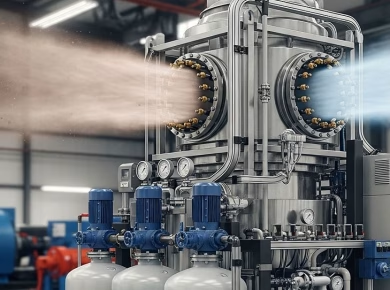When it comes to achieving a perfectly flat surface for your landscaping or construction projects, mastering the use of a plate compactor can make all the difference. This powerful piece of equipment is designed to compact soil, gravel, asphalt, and even concrete, ensuring stability and longevity in your work. However, using a plate compactor effectively requires not just understanding the tool itself, but also employing the right techniques during operation. In this tutorial, we will delve into the proper technique for using a plate compactor, ensuring you achieve the flat results you desire.
Understanding the Plate Compactor
Before we dive into the techniques, let’s take a moment to understand what a plate compactor is and how it works. A plate compactor is a heavy machine with a flat plate that vibrates at high speeds. This vibration is what allows it to compress materials effectively. It’s commonly used in various applications, including preparing a base for paving stones, compacting soil before laying down sod, or creating a firm foundation for driveways.
The weight and vibration of the plate compactor are crucial for maximizing compaction. Generally, heavier compactors can exert more force, making them suitable for tougher materials, while lighter models are ideal for smaller jobs or more delicate surfaces.
Preparing for Compaction
Proper preparation is key to achieving the best results. Start by assessing the area you intend to compact. Clear the site of any debris, rocks, or vegetation that could interfere with the compaction process. If you’re compacting soil, it’s essential to moisten it slightly. Dry soil can lead to dust and inadequate compaction, while overly wet soil can become muddy and lose structural integrity.
In addition to preparing the surface, ensure that you’re equipped with the right safety gear. This includes goggles to protect your eyes from dust, gloves to keep your hands safe, and ear protection, as the noise from the compactor can be quite loud.
Operating the Plate Compactor
With the area prepped and your gear on, it’s time to operate the plate compactor. First, familiarize yourself with the controls. Most compactors will have a throttle control to adjust the speed of the machine and a lever to control the direction of travel.
When starting the plate compactor, ensure you’re standing behind the machine for safety. Turn it on and allow it to reach full power before beginning your work. It’s important to maintain a steady speed while operating; moving too quickly can lead to uneven compaction, while going too slow can cause the machine to dig into the material instead of compacting it.
Technique for Effective Compaction
The technique you use while operating the plate compactor can significantly impact your results. Here are some tips to consider:
1. **Overlap Your Passes:** When compacting, it’s crucial to overlap your passes by about 50%. This ensures that no areas are left un-compacted, which can create weak spots in your surface.
2. **Work in Sections:** Divide your area into manageable sections. This not only makes the job feel less overwhelming but also ensures that you achieve consistent compaction across the entire space.
3. **Adjust Your Speed:** While it may be tempting to rush through the job, take your time. Adjust your speed based on the material being compacted. Heavier materials may require slower passes, while lighter materials can be compacted more quickly.
4. **Monitor Your Progress:** After each pass, take a moment to assess the surface. Look for any areas that may need additional compaction and adjust your technique accordingly.
5. **Use the Right Plate Compactor:** Depending on your project, the size and weight of the compactor can make a significant difference. For smaller jobs, a lighter model may suffice, but for larger areas or tougher materials, a heavier machine will deliver better results.
After Compaction: Assessing Your Work
Once you’ve completed the compaction process, it’s important to assess your work. Check for any uneven spots or areas that may require additional attention. If necessary, make an additional pass over these areas to ensure they are properly compacted.
Another consideration is the material you are working with. Some materials, like gravel, may require a different approach compared to soil or asphalt. For example, gravel may need to be compacted in layers, as trying to compact too much at once can lead to inadequate results.
Common Mistakes to Avoid
Even seasoned operators can make mistakes when using a plate compactor. Here are some common pitfalls to watch out for:
1. **Neglecting Moisture Control:** As mentioned earlier, moisture plays a critical role in compaction. Too dry or too wet can hinder your results. Finding the right balance is key.
2. **Skipping Surface Preparation:** Properly preparing the area before compaction can save you time and frustration later. Don’t overlook this critical step.
3. **Ignoring Safety Measures:** Always prioritize safety. Ensure you’re wearing the appropriate gear and that bystanders are at a safe distance.
4. **Compacting Too Quickly:** Rushing through the job can lead to uneven surfaces. Take your time to ensure thorough compaction.
5. **Failing to Monitor Performance:** Regularly check the surface during the compaction process to catch any issues early on.
Conclusion
Mastering the use of a plate compactor is a skill that pays off in the quality of your work. By understanding the machine, preparing your area properly, and applying the right techniques, you can achieve a perfectly flat surface that will stand the test of time. Remember to take your time, monitor your progress, and adjust your methods as necessary. Each project offers new challenges, and with practice, you’ll become more adept at using this powerful tool effectively. Whether you’re a DIY enthusiast or a seasoned professional, the right technique will ensure your compaction efforts lead to lasting results. Embrace the learning process, and soon, you’ll find that achieving flat results isn’t just a goal; it’s a gratifying experience.



